Unlock the full potential of your business with a focus on maximizing ROI on communications. Our expert solutions drive impactful results.

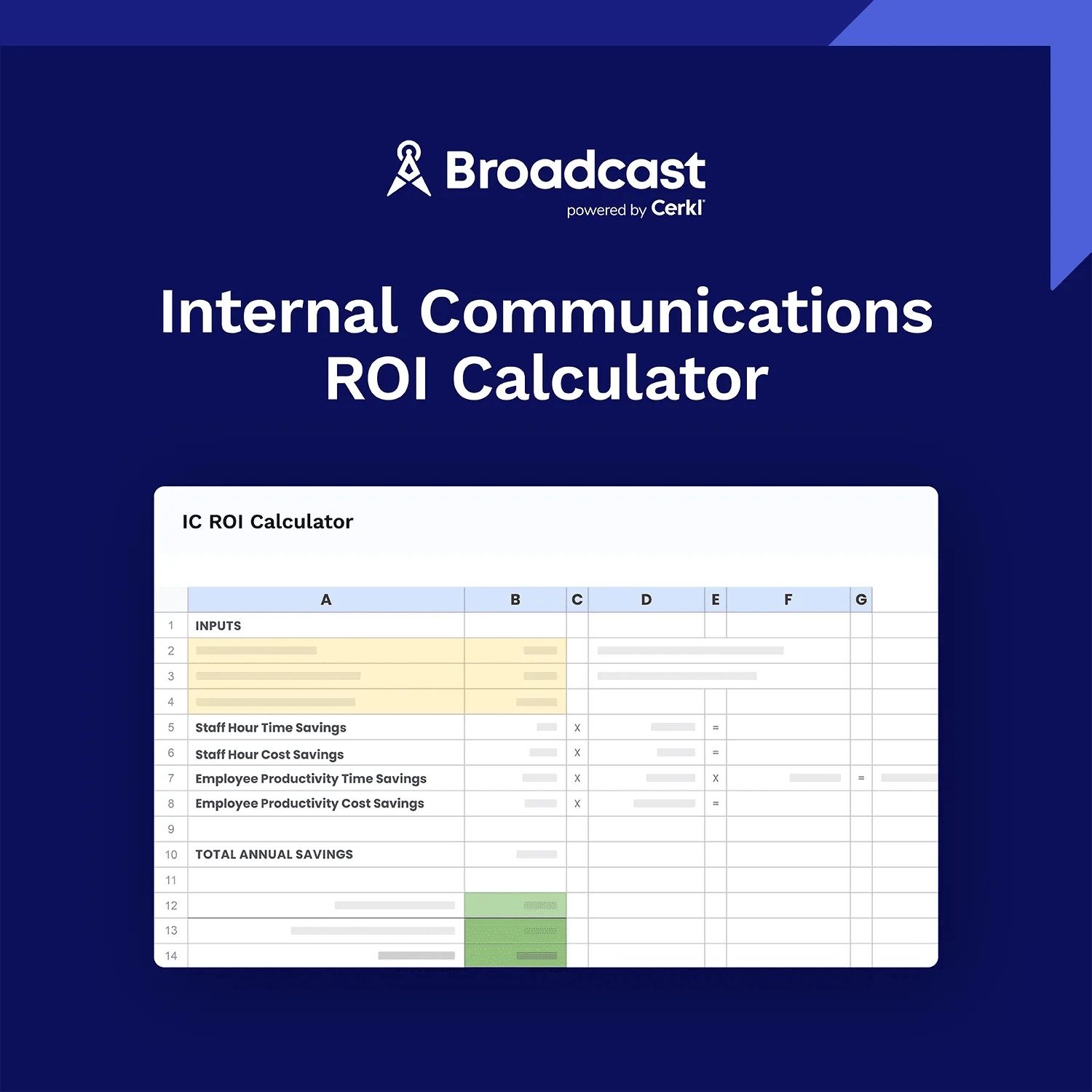
Measure the ROI of using modern internal communications. Get the template for free without any risk or commitment.
Access Now
Internal communication isn’t just a nice-to-have; it’s a strategic asset. It keeps teams aligned, builds culture, and drives action. The real challenge though, is showing impact and demonstrating value. This is why it’s vital for stakeholders, decision-makers, and role players to understand the financial impact of communications. The challenge is to showcase the inherent value it brings to an organization. It is equally important to recognize the losses that ineffective internal communication can cause
Communication teams are commonly asked to show the numbers. For instance: What’s the return on investment (ROI) of internal communication? Where’s the measurable impact? By understanding the ROI of communications, decision-makers can grasp the benefits and value added from communications investments.
If you’ve struggled to answer questions about ROI, you’re not alone. The return can seem difficult to quantify, but it’s worth the effort. From boosting productivity to cutting turnover and driving engagement, effective internal comms deliver business value and can significantly improve the bottom line.
According to Gallagher’s Employee Communications Report 2025, there has been a consistent, incremental increase in the use of data by internal communicators. Furthermore, at 11%, the increase in communicators using data to provide evidence of value tops the list of reasons they measure the stats. Their State of the Sector 2024/25 survey, on which the report is based, found that 81% of communicators use data to demonstrate the value of communications. Similarly, 81% use data to understand the effectiveness of communications sent. Additionally, employee engagement is the top business metric tracked, with 71% stating they regularly monitor engagement.
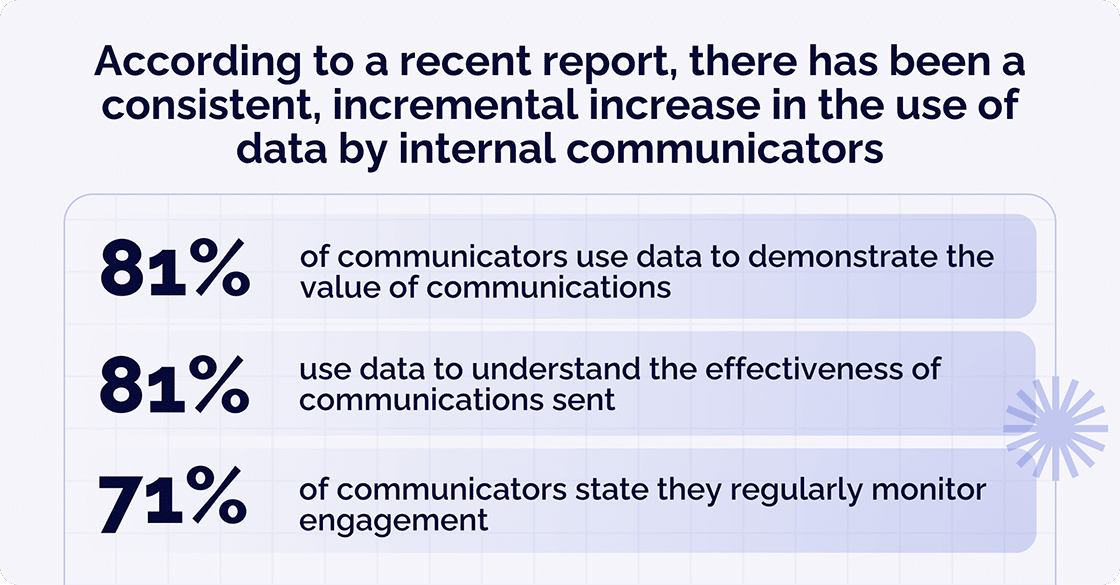
In this post, we unpack ROI in relation to internal communications and highlight eight common reasons why you might not be seeing ROI. We focus on its values and identify what you can do to capitalize on ROI in internal communication.
ROI, in its simplest form, is a measure of profit relative to investment. In the context of internal communications, it signifies the financial gains or cost savings resulting from value added from communications investments.
However, ROI in internal communication goes beyond dollars and cents. It’s about the ripple effects that lead to higher employee satisfaction, lower turnover, and a stronger, more connected culture.
Measuring the return on an internal comms platform can be challenging. You’re dealing with engagement, not only revenue. But just because it incorporates a softer metric doesn’t mean it’s any less important or unmeasurable.
Having said that it’s not easy to measure ROI, it’s certainly worth it. Research shows that good internal communication is a key driver of an organization’s financial performance. Studies back up this claim, proving the advantage is real.

A solid foundation, clear structure, and good framework are essential for meaningful measurement. But before you get there, management must understand that internal and external communication deserve the same level of rigor.
By recognizing the crucial role communication plays in fostering employee engagement and commitment, organizations can unlock their full potential and increase their market value.
Quantify the financial benefits of your internal communications
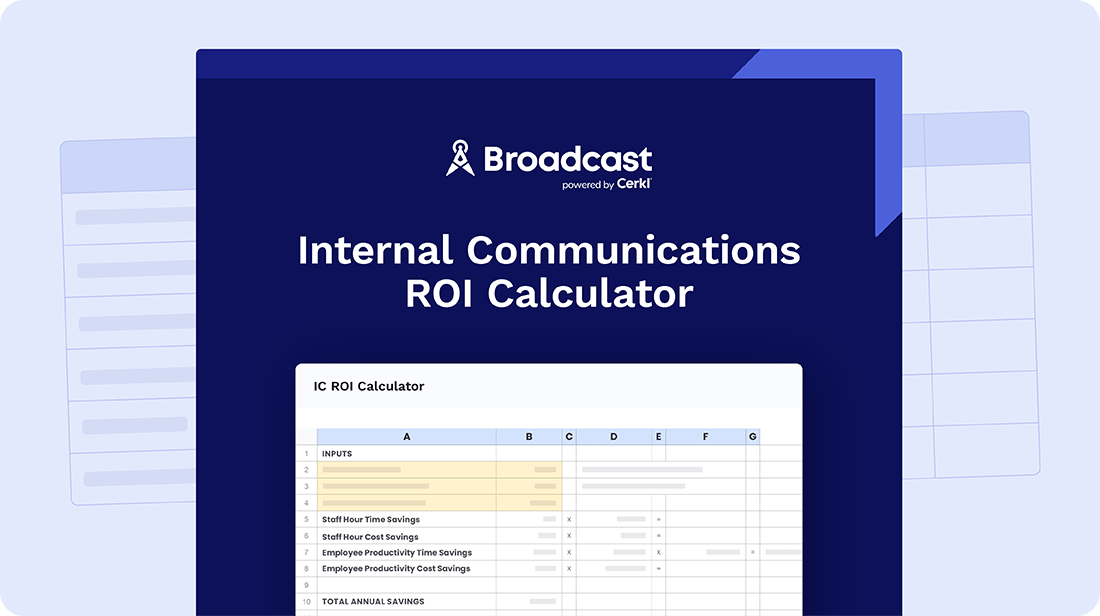
Understanding the ROI of internal communication isn’t always straightforward. Even the most well-intentioned strategies can run into roadblocks when it comes to measurement. Here are eight key reasons why the benefits of internal communication often go unnoticed or unquantified.
Measuring the direct impact of internal communications on financial outcomes can be challenging. The impact of internal communications is often indirect and difficult to quantify. For instance, it can involve changes in employee behavior, engagement, productivity, and retention. These values added from communication are not often easily translated into financial metrics.
Internal comms teams often work with goals that aren’t clearly aligned with overall business objectives. Without a direct line to performance indicators that matter to leadership — like revenue, retention, or productivity — ROI becomes difficult to demonstrate.
Gallagher’s State of the Sector survey found a strong correlation between positive performance against Key Performance Indicators (KPIs) and the utilization of data specifically to measure the effectiveness of comms.
“Those likely to exceed targets better leveraged data, had effective relationships, were satisfied with their progress on overall purpose, and satisfied with their channels.”
Gallagher
However, their report expresses surprise that the results of the business metrics they were tracking did not align with their KPIs. For example, despite 92% of respondents indicating they have “some accountability” for employee engagement, only 71% regularly monitor engagement rates. Also, 56% were accountable for employee retention, but only 40% track this as a business metric.
The effects of internal communications initiatives may take time to show measurable results. Determining the evaluation period of the communication ROI might be difficult. It can also be challenging to distinguish the impact of internal communications initiatives and other factors influencing employee performance or business outcomes.
Internal communications efforts typically involve multiple channels, tactics, and messages. Understanding the impact of one initiative and determining its contribution to ROI can be difficult.
As Gallagher’s survey found, half of communicators are dissatisfied with the ability of the channels they use to reach all employees, especially when locations and work descriptions differ. At the same time, when they are satisfied with their channels, they are more likely to exceed targets and meet their goals.
There are no standard metrics for measuring internal communications, so it can be challenging to come up with a rigorous approach. Unique goals and objectives should also be considered when evaluating ROI.
Data lives in multiple places including HR platforms, engagement tools, email analytics, and intranet logs. Without integration, it’s tough to pull together a full picture of communication effectiveness or tie it back to outcomes.
If leadership doesn’t see internal comms as a business driver, they may not support the investment in tools or analytics needed to measure ROI. That lack of support trickles down, making it harder to prove value.
Gallagher’s survey found that while more communicators are tracking data, curating and presenting it to leaders in a meaningful way is a challenge. Most do share measurement reports and data, with 83% explaining the “why” behind the numbers, 79% identifying trends and patterns, and 82% creating actionable recommendations.
However, that leaves one in five communicators providing reports to leaders, “who are likely scratching their heads and wondering, ‘So what?’”
Internal communication success is often judged anecdotally by how something “felt” rather than what it achieved. This makes it challenging to use consistent benchmarks or track year-over-year improvements.
Quantify the financial benefits of your internal communications

There’s an undeniable connection between ROI and effective communication practices. By cultivating a culture of open dialogue, transparency, and alignment with organizational goals, companies can enhance employee commitment and engagement.
After decades of research, Gallup reveals the many benefits of employee engagement as a strategy. Their workplace engagement data shows that engaged employees drive stronger business outcomes across every industry, regardless of company size or economic conditions. Also, engaged employees demonstrate higher levels of productivity and are more likely to remain with organizations, resulting in improved financial outcomes.
Their research indicates that sales increase by 18% when employees are actively engaged. At the same time, profitability increases by 23%. There is 78% less absenteeism, 28% less shrinkage (theft), and 63% fewer safety incidents.
However, Gallup warns that only 21% of employees globally and 31% in the U.S. are categorized as “engaged.” In a January 2025 Workplace article, the company’s chief scientist of Workplace Management and Wellbeing, Jim Harter, states that U.S. employee engagement has sunk to a 10-year low. At 17%, the number of actively disengaged employees has increased.
A McKinsey & Company article posted in July 2025 examines the need for increased productivity in the advanced industrial manufacturing workforce. A major challenge is that much of the workforce is young and less experienced. A solution, they say, is “ROI-driven investments that build a more agile, capable, and productive workforce.” ROI-driven decision-making is common sense, they say, but it’s often not common practice.
They don’t discuss engagement, but a recent edition of McKinsey’s Mind the Gap alludes to ROI-driven investments relating to employees.
“Companies should invest in collaboration, connectivity, innovation, mentorship, and skill development.”
McKinsey
Ultimately, the narrative of effective internal communications (illustrated below) is one of financial success, a competitive edge, and value added from communications.
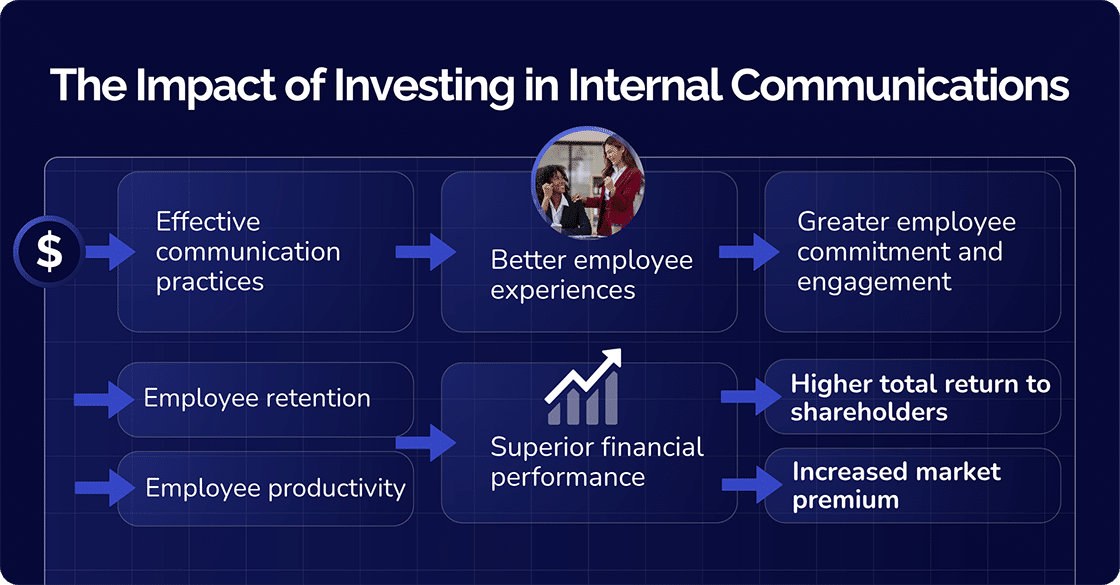
To harness the full potential of the internal communication return on investment, organizations must embrace a strategic approach. By understanding the narrative behind their communication initiatives, decision-makers can make informed investments that align with organizational objectives.
Returning to Gallagher’s report, we can see that while 92% of organizations rely on email as a primary internal channel, only 29% say they are measuring communication effectiveness consistently. This gap highlights the challenge that leaders want to see impact, but many of those responsible for tracking data still lack the tools or processes to do so.
To change that, internal communication must be treated like any other business function. It needs to be evaluated through clear metrics, tied to strategic outcomes, and adjusted based on what the data shows.
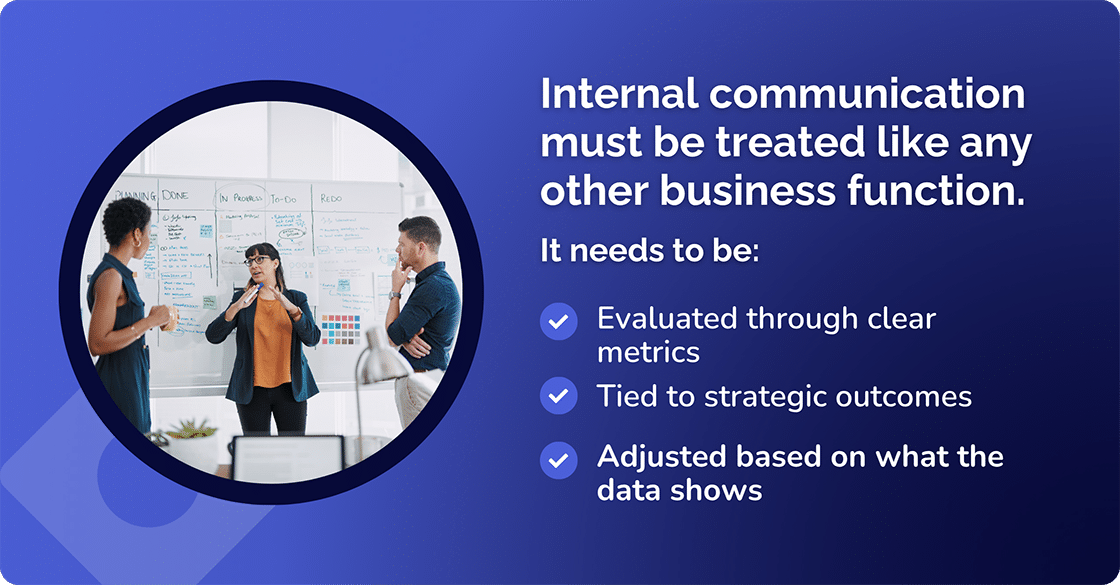
That is where an ROI calculator comes in. If you want to know what your comms ROI is with simple measurements, it’s a necessity. Not knowing the results or not focusing on ROI could have much larger and more challenging, high-stakes implications.
Then, after you figure out the current state of your internal communications, an investment that organizations should make is an effective internal communication platform. This not only allows them to communicate with their employees, but also to communicate effectively, with the differences of the company and even individuals in mind.
A platform should be able to adapt to the needs of the organization and to each employee, and should also be scalable and accessible. There are other important components to a successful internal communication platform, like analytics and security.
The true power of internal communications lies in its ability to drive financial success. By recognizing the narrative behind ROI in internal communications, decision-makers can grasp the tangible benefits that effective internal communications platforms bring to organizations.
Engaged employees, reduced turnover costs, increased productivity, and improved financial performance are all outcomes of strategic communication investments. But it is not just about engagement and retention; organizations are finding that they are getting measurable value from their internal comms platform. By embracing internal communications platforms, organizations can unlock their full potential and achieve long-term financial success.
Proving the ROI of internal communication starts with the right tools — and that’s where Cerkl Broadcast delivers.
With robust, real-time analytics, you can track exactly what’s landing and what’s not. From open rates and click-throughs to read time and audience engagement, Cerkl gives you clear visibility into communication performance, so you can refine your strategy and show real impact.
Cerkl’s omnichannel distribution ensures your message reaches every employee, whether they’re in the office, remote, or on the floor. Publish once and deliver automatically via email, mobile, intranet, or Microsoft Teams, meeting people where they are.
The dynamic, automated News Digest personalizes internal content for each employee based on their role, location, and interests. That means fewer ignored emails and more relevant reads, boosting engagement without extra effort from your team.
Add to that click-to-acknowledge features, automated segmentation, and real-time feedback, and you’ve got a platform built to turn internal comms into a measurable business driver.
With Cerkl, you’re not just sending messages, you’re delivering results.
Ready to see what your internal comms are really worth? You can leverage the power of our internal communication ROI calculator to see the effectiveness of your communication strategies and estimate the impact of your comms.
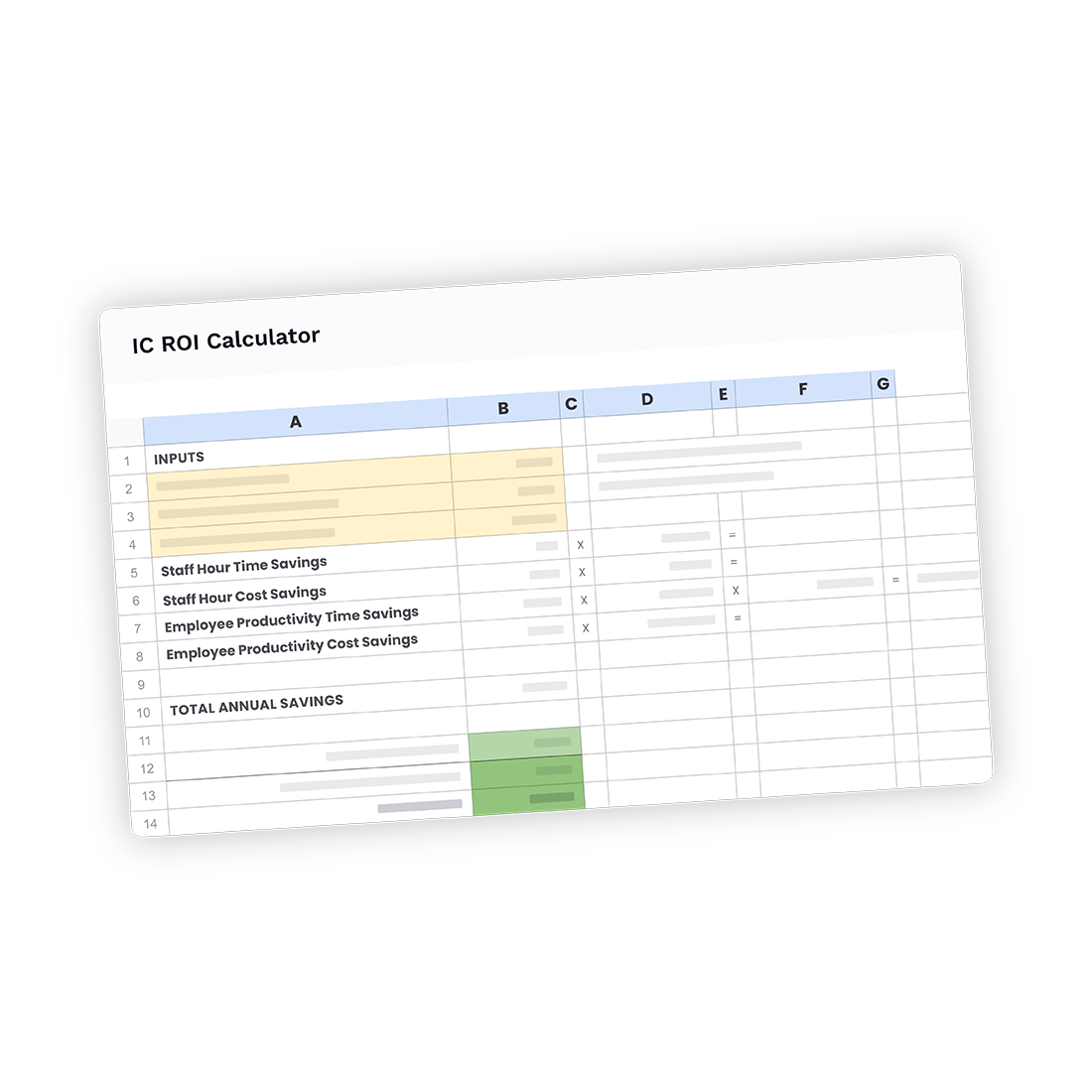
Quantify the financial benefits of your internal communications
How to communicate ROI? To effectively communicate ROI, leverage visuals and data to showcase tangible results. Align your message with stakeholder priorities to highlight the value of the investment. Present clear objectives and use charts, graphs, and infographics to make complex information more accessible. Be transparent about assumptions and address potential risks, ensuring your communication resonates with decision-makers.
How is ROI in internal communication measured? Measuring ROI in communications involves calculating the return on investment for specific campaigns or initiatives. Quantify the monetary gains or cost savings resulting from the communication efforts and divide it by the total cost of the campaign. Express the ROI as a percentage, showcasing the effectiveness and success of the communication strategy.
What are the challenges when determining the ROI in internal communications? Executives may face several challenges when determining the return on investment (ROI) in internal communications:
– Quantifying the impact: Internal communications’ impact is often indirect and difficult to quantify. It can involve changes in employee behavior, engagement, productivity, and retention.
– Time lag: Determining an ROI evaluation period might be difficult. It can be challenging to distinguish the impact of internal communications initiatives. Also, there are other factors influencing employee performance or business outcomes.
– Multiple variables: Understanding the impact of one initiative and determining its contribution to ROI can be difficult.
– Lack of standardized metrics: There are no standard metrics for measuring internal communications, so it can be challenging to come up with a rigorous approach.

Quantify the financial benefits of your internal communications